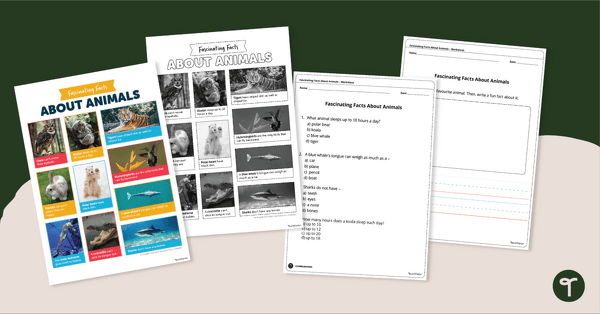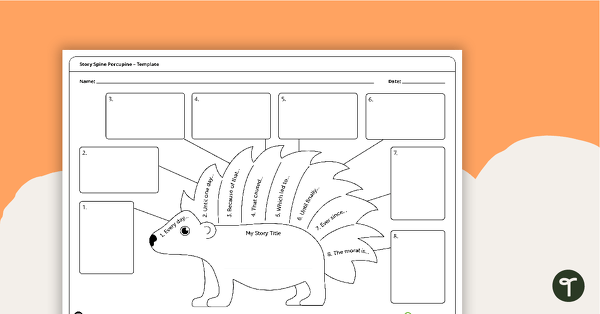ACELA1447
Understand that the purposes texts serve shape their structure in predictable ways
Elaborations
- discussing and comparing the purposes of familiar texts drawn from local contexts and interests (Skills: Literacy, Critical and Creative Thinking)
- becoming familiar with the typical stages of types of text including recount and procedure (Skills: Literacy, Critical and Creative Thinking)
- using different types of texts, for example procedures (including recipes) and discussing the text structure (Skills: Literacy, Critical and Creative Thinking)
- Plus Plan

Exploring Informative Texts PowerPoint
A 23 slide editable PowerPoint template to use when teaching your students about the structure and language features of informative texts.
- Plus Plan

Informative Text Structure - Sorting Activity (Complete Set)
A set of 5 sorting activities to use in the classroom when learning about the structure of informative texts.
- Plus Plan

Exploring Persuasive Texts PowerPoint - Year 1 and Year 2
A 35 slide editable PowerPoint template to use when teaching your students about the structure and language features of persuasive texts.
- Plus Plan

Build a Procedure Text – Cut and Paste Worksheets
Use these different examples of procedure writing to teach your students about the structural features of procedure texts.
- Plus Plan

Exploring Narrative Texts PowerPoint
Teach your students about the key elements of narrative texts with this comprehensive teaching presentation.
- Plus Plan

Facts and Opinions - Caterpillars
A fun activity for students to use when identifying facts and opinions about caterpillars.
- Plus Plan

For and Against Worksheets
Explore 'for' and 'against' arguments for five different topics with this set of 'for' and 'against' sorting activities.
- Plus Plan

Introduction to Personal Recounts PowerPoint
An 18 slide editable PowerPoint template to use when teaching younger students about the structure and language features of personal recounts.
- Plus Plan

Exploring Procedural Writing Teaching Slides
Teach your students how to write a procedure using this detailed slideshow targeted at lower primary school students.
- Plus Plan

Fascinating Facts About Animals Worksheet
Build reading comprehension skills and learn about amazing animals with a printable year 1 reading comprehension worksheet pack.
- Plus Plan

'Facts About...' - Informative Texts Worksheet
A fact finding scaffold to use when introducing informative writing in the classroom.
- Plus Plan

Procedural Writing Posters
Display this set of 5 procedural writing posters in your classroom during your procedural writing unit.
- Plus Plan

Writing A Recount Poster
Display this poster in your room as a visual reminder of the structure of a recount.
- Plus Plan

Writing A Procedure Poster
Display this poster in your room as a visual reminder of the structure of a procedural text.
- Plus Plan

How to Make a Pizza Interactive Activity
Use this “How to Make a Pizza” procedural writing interactive activity to model the purpose, structural elements and language features of procedure texts.
- Plus Plan

How to Make an Ice Cream Sundae Interactive Activity
Use this “How to Make an Ice Cream Sundae” procedural writing interactive activity to model the purpose, structural elements and language features of procedure texts.
- Plus Plan

Procedure Worksheet – How to Make a Paper Aeroplane
A comprehension worksheet for a magazine procedure article about making a paper aeroplane.
- Plus Plan

Personal Recount Sequencing Activity - Surprise!
A worksheet to use in the classroom when learning the sequence of a personal recount.
- Plus Plan

Personal Recount Sequencing Activity - My Broken Leg
A worksheet to use in the classroom when learning the sequence of a personal recount.
- Plus Plan

Informative Text Structure - Sorting Activity (Crocodiles)
A fun sorting activity to use in the classroom when learning about the structure of informative texts.
- Plus Plan

Crabbing at Night - Sequencing Worksheet
Identify the story beginning, series of events and ending with this narrative text sequencing activity.
- Plus Plan

Personal Recount Sequencing Activity - Police Car Ride
A worksheet to use in the classroom when learning the sequence of a personal recount.
- Plus Plan

Informative Text Structure - Sorting Activity (Frogs)
A fun sorting activity to use in the classroom when learning about the structure of informative texts.
- Plus Plan

Informative Text Structure - Sorting Activity (Baleen Whales)
A fun sorting activity to use in the classroom when learning about the structure of informative texts.
- Plus Plan

Three Little Pigs – Sequencing Worksheet
Identify the story beginning, series of events and ending with this narrative text sequencing activity.
- Plus Plan

Year 1 Magazine – "What's Buzzing?" (Issue 3) Task Cards
A set of five literacy rotation task cards to be used in conjunction with Issue 3 of Teach Starter’s Year 1 magazine.
- Plus Plan

Story Spine Porcupine – Narrative Writing Template
A template designed to help students plan their narrative writing structure.
- Plus Plan

Year 1 Magazine - "What's Buzzing?" (Issue 1) Task Cards
A set of five literacy rotation task cards to be used in conjunction with Issue 1 of Teach Starter's Year 1 magazine.
- Plus Plan

Why Bears Have Stumpy Tails – Sequencing Worksheet
Identify the story beginning, series of events and ending with this narrative text sequencing activity.
- Plus Plan

Recount Writing Checklist
Now your students can make sure that they have everything they need in their recount.
- Plus Plan

Informative Text Structure - Sorting Activity (Butterflies)
A fun sorting activity to use in the classroom when learning about the structure of informative texts.
- Plus Plan

Informative Text Structure - Sorting Activity (Penguins)
A fun sorting activity to use in the classroom when learning about the structure of informative texts.